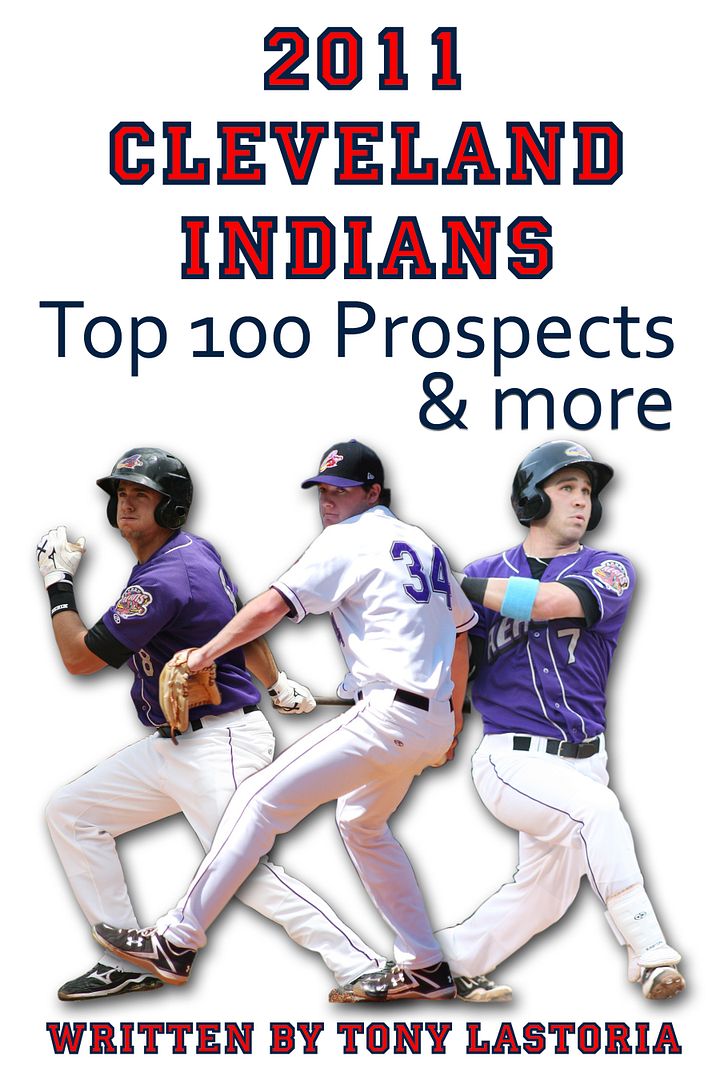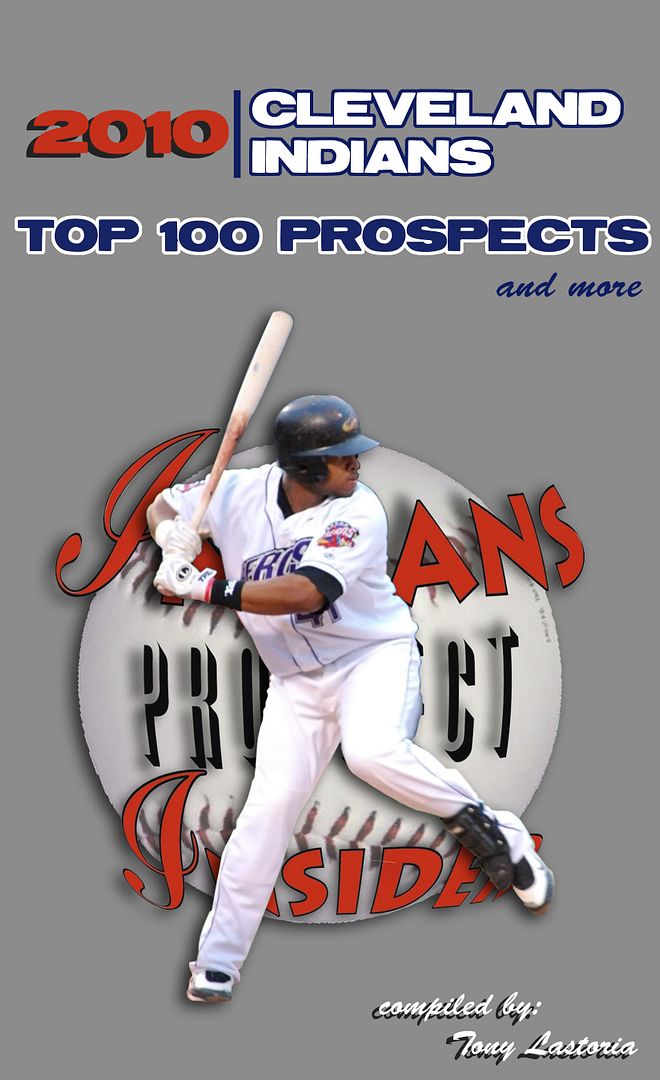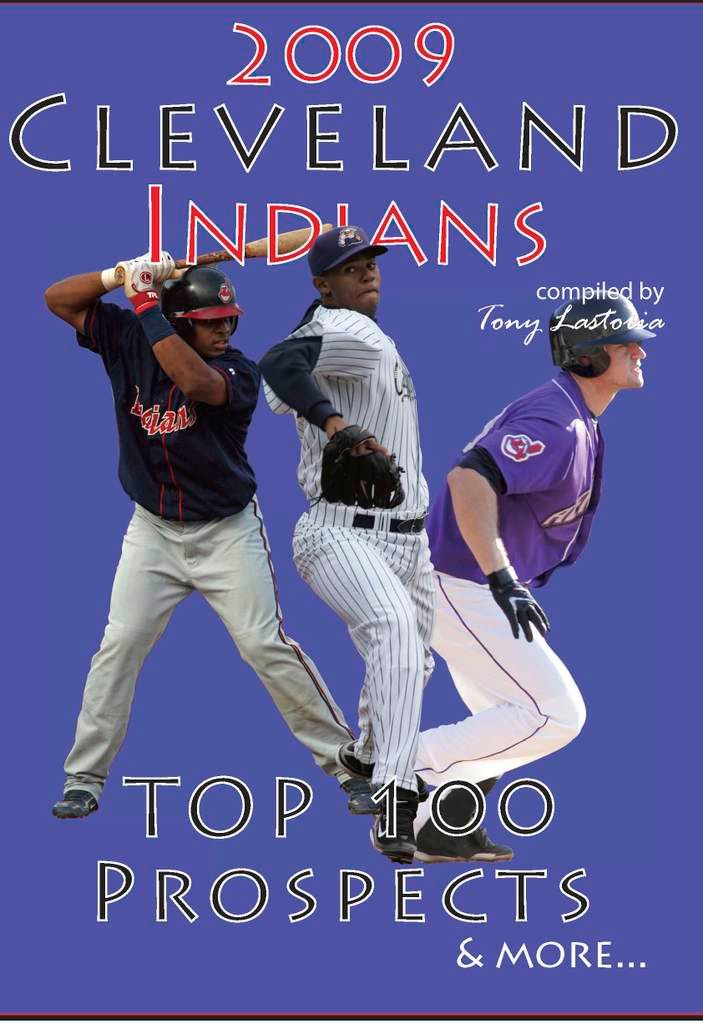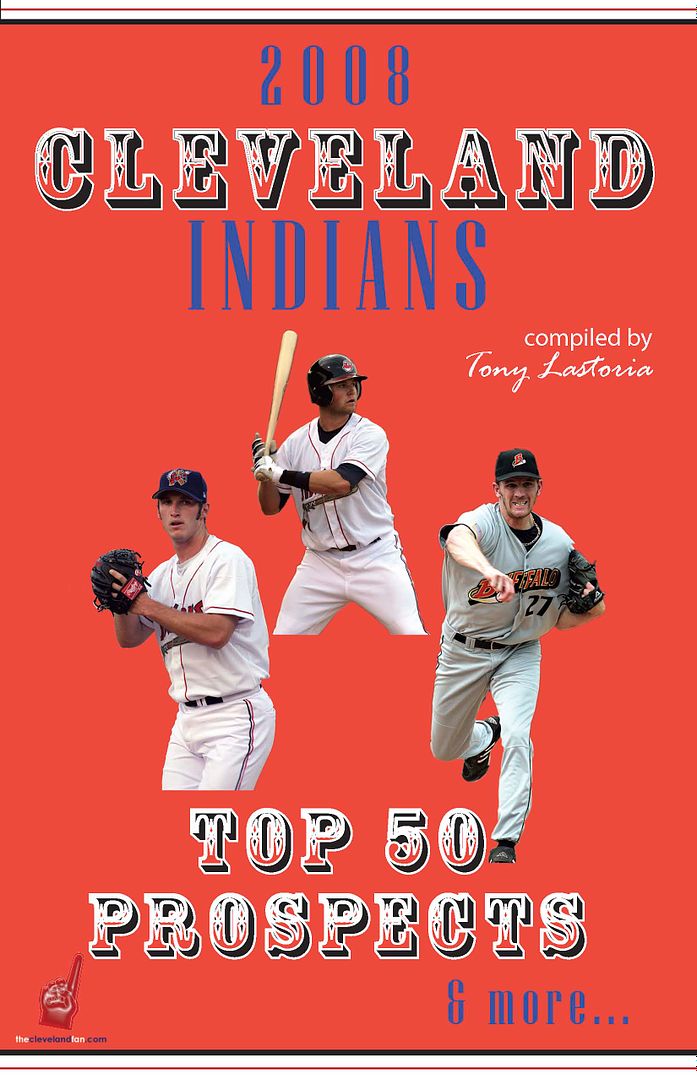Carlos Santana - Catcher
Born: 04/08/1986 - Height: 5'11" - Weight: 190 - Bats: Switch - Throws: Right
| Year | Age | Team | Lvl | G | AB | R | H | 2B | 3B | HR | RBI | BB | SO | SB | Avg | OBP | SLG | OPS |
| 2005 | 19 | GCL Dod | R | 32 | 78 | 14 | 23 | 4 | 1 | 1 | 14 | 16 | 8 | 0 | .295 | .412 | .410 | .822 |
| 2006 | 20 | Vero Beach | A+ | 54 | 198 | 16 | 53 | 10 | 2 | 3 | 18 | 23 | 43 | 0 | .268 | .345 | .384 | .729 |
| 2006 | 20 | Ogden | R | 37 | 132 | 31 | 40 | 5 | 1 | 7 | 27 | 30 | 19 | 4 | .303 | .423 | .515 | .938 |
| 2007 | 21 | Great Lakes | A | 86 | 292 | 32 | 65 | 20 | 1 | 7 | 36 | 40 | 45 | 5 | .223 | .318 | .370 | .688 |
| 2008 | 22 | Inland Emp | A+ | 99 | 350 | 88 | 113 | 34 | 4 | 14 | 96 | 69 | 59 | 7 | .323 | .431 | .563 | .994 |
| 2008 | 22 | Kinston | A+ | 29 | 105 | 34 | 37 | 5 | 1 | 6 | 19 | 20 | 24 | 3 | .352 | .452 | .590 | 1.042 |
| 2008 | 22 | Akron | AA | 2 | 8 | 3 | 1 | 0 | 0 | 1 | 2 | 0 | 2 | 0 | .125 | .125 | .500 | .625 |
| 2009 | 23 | Akron | AA | 130 | 428 | 91 | 124 | 30 | 2 | 23 | 97 | 90 | 83 | 2 | .290 | .413 | .530 | .943 |
| Totals | 469 | 1591 | 309 | 456 | 108 | 12 | 62 | 309 | 288 | 283 | 21 | .287 | .395 | .486 | .881 |
History: Santana was an undrafted free agent signing by the Los Angeles Dodgers out of the Dominican Republic in August 2004. He was traded to the Indians along with Jon Meloan on July 25th, 2008 for Casey Blake. Last year he played for the World Team in the 11th annual XM All-Star Futures Game as part of Major League Baseball's All-Star Weekend at Busch Stadium in St. Louis. He was named the 2008 California League MVP and 2009 Eastern League MVP. He is the third Double-A Akron player to win MVP honors, joining Jordan Brown (2007) and Victor Martinez (2002). At Akron last year he dominated the league in almost every category as he finished 11th in the Eastern League in batting average (.290), 3rd in runs (91), 2nd in HR (23), 2nd in RBI (97), 1st in walks (90, 15 more than 2nd place player), 4th in total bases (227), 2nd in on-base percentage (.413), 1st in slugging percentage (.530), and 1st in OPS (.943).
Strengths & Opportunities: Santana is widely considered the best young catching prospect in all of baseball, largely because of what he can do with the bat. He is an everyday big league catching prospect with an approach that is big league ready and plus-plus power to all fields. He has a great feel for the bat and strike zone, is a true hitter, and has an incredible ability to square up balls where they just explode off his bat. He has averaged 90 walks the past two seasons, and drawn more walks than strikeouts in both seasons which shows his incredible eye and patient approach at the plate. He is an intense competitor, and a very aggressive attack the ball kind of hitter. He is aggressive and attacks anything in the zone, but is also extremely patient where he will not swing at very many pitches out of the zone. Pitchers often pitch around him, but to his credit he does not get frustrated as he takes what the opposing pitchers give him, which is a clear sign of just how advanced a hitter he really is. He doesn't expand his zone as he rarely swings at a bat pitch, and when he does get a pitch to hit he makes consistent, hard contact and drives the ball really well. His approach on both sides of the plate is very good, and he maintains a good low maintenance swing from both sides.
As a switch hitter at a premium position, Santana is very athletic and has a lot of strength. He is lean and not a very big guy as he only stands at 5'11" tall, but he is built like a Greek god and is very strong in his arms and wrists. He is still filling out his body, so more weight and power are sure to come. His consistency as a player is also a big strength as a lot of scouts have been extremely impressed with how consistent he is across the board. He maintains an outstanding contact rate and he never really struggles offensively, and probably has the best balance of any hitter in the Indians' system. He is very athletic and moves well for a catcher who is not a liability on the base paths. He is an average runner, but is smart on the bases where he gets good jumps going from first to third and second to home. He already has loads of power, discipline, and bat-to-ball ability, and the Indians believe that there is more to come as his numbers could increase and get better as he matures.
Santana's offensive game is compared a lot to former Indians catcher Victor Martinez because of their comparable offensive skill set, they both switch hit, and they both moved from another position to be a catcher. There are some differences though as Santana is a couple inches shorter than the bigger bodied Martinez, and he is also leaner and a little more muscular than Martinez was in the minors. Another big difference is unlike Martinez who lumbers around the bases, Santana is very athletic and runs well. Santana and Martinez are both aggressive hitters, but while Martinez may hit for a higher average, Santana has shown a penchant to be more patient at the plate and draw more walks and also has more raw power.
Santana is not just a big time offensive talent as he also has developed into a very good backstop who still has a lot of upside behind the plate. He has a great passion for catching and loves to take charge and is a leader on the field. He is a former third baseman and outfielder that the Dodgers moved behind the plate to take advantage of his rocket fueled throwing arm. He has one of the best arms in the game as he showcases excellent arm strength with a lightning bolt for an arm, and shows good accuracy. He also loves to throw the ball, whether it be throwing out potential base-stealers or throwing behind runners on base.
While Santana's throwing has not been much of a problem for him in his transition to catching, it is his receiving skills and all the other intangibles that go into catching which he has worked very hard to develop and improve. Last season was only his third full season playing catcher, but the strides he has made with picking up the nuances of catching and developing his skills behind the plate has been very impressive. Thanks to his outstanding work ethic he has become an above average receiver. While he is still a little rough around the edges, he shows very good hands, receives the ball well, takes charge of his staff and calls a good game, and he moves well behind the plate and blocks balls well. He has shown a hunger and willingness to learn and improve his defense and becoming a better game caller, and it showed last year as by the end of the season he had made big improvements in both of these areas. Everything the Indians asked of him from a game-calling standpoint he answered the bell on, and he also had a significant improvement with his use of the English language to help him better communicate with his pitchers. He also made significant strides with his focus and being a leader. He has proven to be a long term, permanent fit at the catching position, and just needs to continue to get more experience behind the plate.
In the offseason Santana went out to the Dominican Republic to play winter ball, but had some problems with his wrist when he first got there. It turned out he had a fractured hamate bone in his right hand, so he underwent surgery in early December to correct the issue. The recovery period for the surgery is typically eight to ten weeks, which should not affect the start of his season. If anything it will just slow him down the first two to three weeks of spring training. In addition to coming back healthy from his surgery, the big thing the Indians want to do with him this year is finish of his development as a catcher by honing in on the nuances of the position. This is why he will start and spend roughly the first half of the season at Triple-A Columbus. There he can work on polishing off his defense behind the plate as well as improving his English, communicating with and handling the pitchers on his staff, calling games, and improving his leadership abilities. He is also working on other things like knowing when to visit the mound to settle his pitcher down, game management, and working on situational pitching. He is an intense competitor and at times he can overreact to bad calls, so he needs to control his emotions a little better.
Outlook: Santana has done a good job so far of living up to all the hype. Last year at this time he was the near unanimous #1 ranked player in the Indians system by most publications and was included in many baseball wide Top 50 Prospect lists. The year he had last year is a testament to his passion for baseball and wanting to be one of the best at what he does, and he certainly has a chance to do just that. His ability to hit for a high average, hit with power, exhibit outstanding plate discipline, and play good defense makes him an elite level player that projects as a perennial All-Star performer at the big league level. There will be some seasoning in the major leagues when he gets there, but there is no question that he will help the Indians in the near future where he has the potential to be a .280-.300 hitting, 25-30 HR, and 100 walk catcher in the big leagues. He is without a doubt the Indians best prospect, and while he will open the 2010 season at Triple-A Columbus, he should be up around the All Star break this year and become the regular everyday catcher in Cleveland for the next six to eight years.
Photo courtesy of Tony Lastoria
Carlos Santana MinorLeagueBaseball.com page
Carlos Santana Baseball-Reference page
Carlos Santana MinorLeagueSplits.com page
Carlos Santana Hitting:















 Everything on this site is free, but for those interested in making any monetary contributions to help support the stability and growth of this site please click on the "Donate" button below.
Everything on this site is free, but for those interested in making any monetary contributions to help support the stability and growth of this site please click on the "Donate" button below.


2 comments:
A broken hamate bone is notorious for sapping a hitter's power. It makes me a bit nervous that people will overreact if his power isn't there for the first couple months of the season. Any idea how well he's recovering and if it feels awkward at all? The ball explodes of his bat and I hope there's no ill-effects.
Ah, yes, patience. One of the true beauties of the game. In other sports where it is so in your face, what I love about baseball is how you truly have to be patient and let the sample sizes play out. A lot of fans don't have that patience, so we over-react to great hot streaks or bad cold streaks. It should be interesting to see how this injury affects him it at all. But I agree that there should be a little patience in the early going. That said, I haven't heard of him having any issues with it this spring, so we will see.
Post a Comment